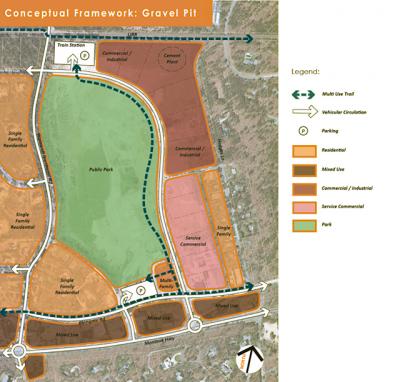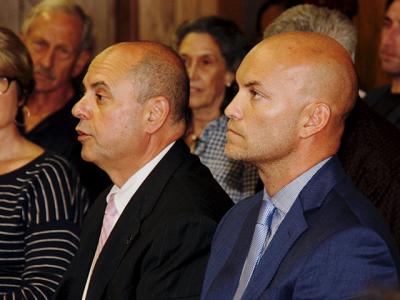A Dire Climate Forecast
A Dire Climate Forecast
As if to emphasize the urgency of the Intergovernmental Panel on Climate Change’s Oct. 8 report stating that severe impacts of climate change are forecast as early as 2040 absent a radical and unprecedentedly rapid transformation of the global economy, Hurricane Michael suddenly intensified in the Gulf of Mexico, becoming the first Category 4 storm to make landfall in the Florida Panhandle. Packing 155-mile-per-hour winds, it left a trail of death and destruction there and in Georgia.
The scientists on the panel, convened by the United Nations, issued a report commissioned by world leaders following the 2015 Paris Agreement, under which 195 nations adopted the goal of holding an increase in the global average temperature to less than 3.6 degrees Fahrenheit, or 2 degrees Celsius, above pre-industrial levels and to pursue an effort toward a lesser increase of 2.7 degrees Fahrenheit, or 1.5 degrees Celsius.
“Sea level rise will continue beyond 2100 even if global warming is limited to 1.5 degrees C in the 21st century,” the report states, because of Antarctic ice sheet instability and/or irreversible loss of the Greenland ice sheet that could mean sea level rise “over hundreds to thousands of years.”
“Impacts of climate change in the ocean are increasing risks to fisheries and aquaculture via impacts on the physiology, survivorship, habitat, reproduction, disease incidence, and risk of invasive species,” the report says. One model projected a decrease in global annual catch of about 1.5 million tons at 2.7 degrees of warming compared to a more than 3-million-ton annual decrease at 3.6 degrees of warming, according to the report. The report warns of a mass die-off of coral reefs and worsening food shortages and wildfires as soon as 2040.
Global net emissions of carbon dioxide must be cut by 45 percent by 2030 and be “net zero” — emissions offset by carbon capture and storage, or absorption by billions of trees planted for that purpose, for example — by 2050 in order to limit warming to 2.7 degrees Fahrenheit, the report says. Achieving those targets will require “rapid and far-reaching transitions in energy, land, urban and infrastructure (including transport and buildings), and industrial systems,” it states, all aimed at deep reductions in carbon dioxide emissions across all sectors. Carbon dioxide removal from the atmosphere, a technology in its infancy, will almost certainly be needed in tandem with immediate and severe emissions reductions.
“This report is the most forceful alarm ever issued by this highly respected international panel of climate scientists,” said Gordian Raacke, the executive director of Renewable Energy Long Island. “The special report makes it clear that we must now act very quickly and at scale.”
“The longer it takes, the more critical it is to move it forward as much as we can,” John Andrews, co-group leader of the Long Island East chapter of Citizens Climate Lobby, said of the urgency to bend the CO2 emissions curve sharply downward. “What it’s going to take, I on’t know. It might take an environmental Pearl Harbor” to rouse people and government to action.
Given collective inaction, said Mr. Andrews, a retired scientist who worked in energy efficient building research at Brookhaven National Laboratory, it is now a question of mitigation, not prevention. “It’s too late, in my judgment, to completely solve the problem, but not too late to make it a lot less bad than if no action is taken.”
Each incremental rise in temperature makes the problem worse, he said. “There’s nothing sacred about 1.5 or 2 — those are benchmarks. The higher the number gets, the more likely it is there will be nasty feedback effects such as the one I really worry about — frozen methane in the permafrost.” Melting permafrost releases methane, a very potent greenhouse gas, which in turn causes more melting, a potentially devastating positive feedback loop. “The higher the warming gets, the more likely these insidious vicious cycles happen,” he said.
“The science of climate change was settled in 1979,” East Hampton Town Supervisor Peter Van Scoyoc said. “Here we are, 40 years later.” He noted local events including the infestation of southern pine beetles, “which now are able to survive this far north,” in Northwest Woods, “four very strong northeasters in three and a half weeks in March” along with several others last winter, and a storm that dumped 13.5 inches of rain in a matter of hours, flooding and destroying his car. “We need to take notice and do what we can,” he said. “It’s really critical.”
In 2014, the town board set a goal of meeting 100 percent of communitywide electricity consumption with renewable sources by 2020 and the equivalent of 100 percent of economywide energy consumption with renewables by 2030. It will not meet the former target; the proposed South Fork Wind Farm, a 90-megawatt installation to be constructed approximately 35 miles from Montauk, will not be operational before 2022. But the town has taken a number of steps to reduce energy consumption and has joined with companies to provide incentives for residents to install solar panels, smart thermostats, and state-of-the-art swimming pool pumps that dramatically cut electricity demand.
Mr. Raacke was recently asked to serve as spokesman for the Long Island chapter of the Climate Reality Project, an education and advocacy group that seeks to counter climate-change denial. “While both the towns on the South Fork and New York State have recognized the scale and urgency of action at the local level,” Mr. Raacke said, “faster and more far-reaching action is needed here on Long Island and elsewhere.”
Such action is unlikely in Washington, D.C., in the short term. Although the Trump administration surprised observers by approving the intergovernmental panel’s report, the president has dismissed climate change as a hoax. More recently, he told the “60 Minutes” correspondent Lesley Stahl that “Something’s changing and it’ll change back again. I don’t think it’s a hoax, I think there’s probably a difference. But I don’t know that it’s man-made.” He cited no evidence to support those assertions.
“I simply have to hope the political situation will improve,” Mr. Andrews said. Citizens Climate Lobby, or C.C.L., is nonpartisan and takes a positive approach to its lobbying efforts. The group advocates a steadily rising fee on fossil-fuel emissions, imposed at the mine, well, or port of entry, which it says accounts for emissions’ true cost. This, the group says, will create a level playing field for all energy sources. Net fees would be returned directly to households as a monthly dividend, injecting billions into the economy, spurring innovation, and building aggregate demand for low-carbon products at the consumer level, it argues.
Voters in Washington State will decide next month whether to adopt a carbon fee, a measure that failed in 2016. “The reason I’m high on C.C.L. is I think it’s the best way to go,” Mr. Andrews said of a carbon fee. “In the current administration, it’s not going to happen, of course, but there is the Washington State initiative, which at least moves in the right direction. Beyond that, I feel frustrated about the fact that there hasn’t been action. . . . I really don’t know what more to say.”
“I think there may be more traction now for some type of carbon pricing,” Mr. Raacke said. But he also pointed to more action on the state level, including the Regional Greenhouse Gas Initiative, a cooperative effort among New York, Connecticut, Delaware, Maine, Maryland, Massachusetts, New Hampshire, Rhode Island, and Vermont to cap and reduce CO2 emissions from the power sector. The states have put a price on carbon emissions from power plants by setting emissions caps and selling nearly all emissions allowances through auctions, proceeds from which are invested in energy efficiency, renewable energy, and other consumer benefit programs.
He also referred to the United States Climate Alliance, founded after President Trump announced a withdrawal from the Paris Agreement last year. “It was started by New York and California and is a bipartisan coalition of governors committed to reducing greenhouse gas emissions consistent with the goals of the Paris Agreement,” he said. The alliance comprises 17 governors, their states representing more than 40 percent of the population.
“The good news,” Mr. Raacke said, “is that we still have a chance to keep global temperature increases within the guardrail of 1.5 to 2 degrees Celsius, which is necessary to avoid catastrophic climate change.”




